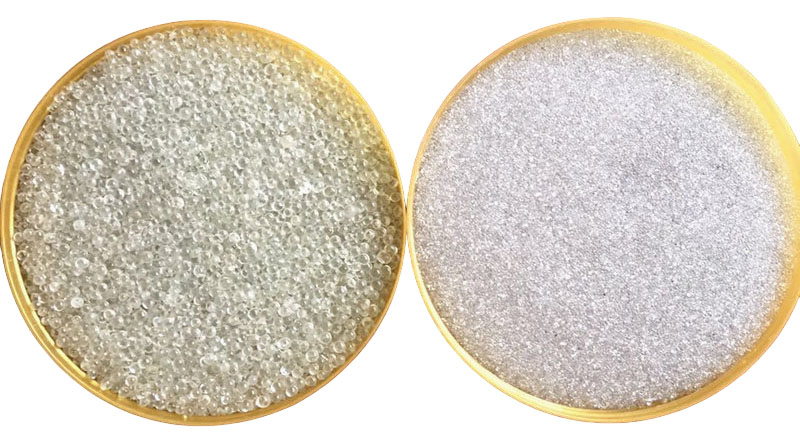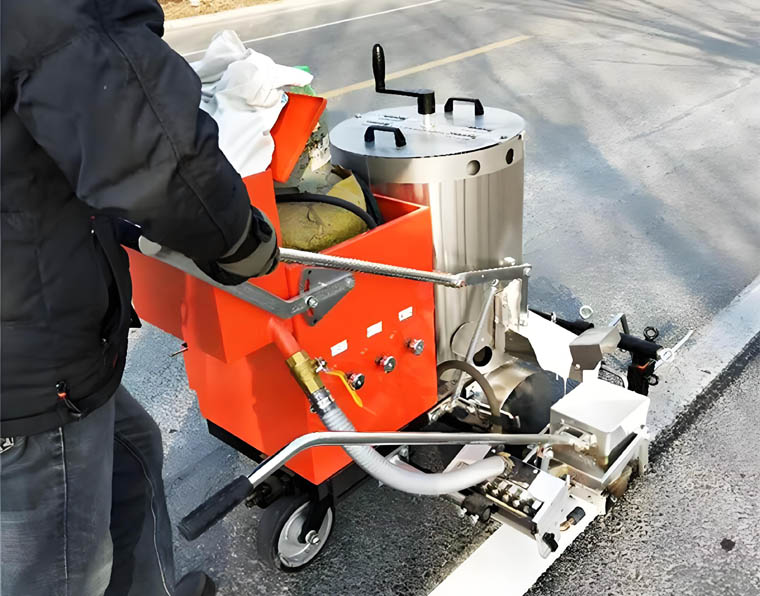1. The basic requirements of road marking visibility
Modern road marking systems need to meet the core requirements of all-weather visibility: high color rendering index pigments to ensure color saturation during the day, relying on the glass bead microprism structure to achieve directional reflection at night. Authoritative research shows that the nighttime accident rate of roads with reflective marking can be reduced by 35%-45%, in which the quality of glass beads accounts for more than 70% of the reflective efficiency contribution.
2. Glass beads quality grading control system

Optical performance index
- Refractive index grading: N ≥ 1.53 high refractive index glass beads must be used (international ISO 9001 certification system)
- Roundness control: precision glass beads roundness ≥ 92% (laser particle size analyzer detection)
- Particle size distribution: 0.8-1.2mm main particle size ratio + 0.6-0.8mm auxiliary particle size combination
Physical properties control
- Impurity content: ≤0.3% (electron microscope scanning detection)
- Compressive strength: ≥120MPa (pressure tester test)
- Water resistance: ≤0.5% quality loss after 72 hours of immersion
3. the precise operation points of the road marking machine
- Temperature control: the construction temperature of thermoplastic coating should be stabilized at 180-220°C.
- Too high temperature: the paint is too thin and the glass beads settle too fast.
- Too low temperature: bonding is not firm, glass beads are easy to fall off.
Spreading technology:
- Recommended spreading quantity: 300-500g/m².
- Spreading height: 1.2-1.5m from the coating surface
- Optimum embedding degree: 50-60% of glass beads embedded in the coating.

4. Environmental adaptability construction program
Response to meteorological conditions
- Wind warning system: automatic activation of windshield for grade 3 winds
- Humidity compensation program: fast curing mode is activated when the humidity is >80%.
- Low-temperature construction program: infrared heating pretreatment is used below °C.
Adaptation to road surface conditions
- Wet road surface: pretreatment with modified silane coupling agent
- Asphalt pavement: penetration depth of primer ≥0.5mm
- Cement pavement: bonding strength of primer after acid etching treatment≥2.5MPa
5. Quality control standard of whole life cycle
Initial performance test
- Retro-reflection coefficient: ≥600mcd-m-²-lx-¹ (30 meters detection distance)
- Chromaticity coordinate: L≥85, a≤2.5, b*≤15 (CIE standard)
Durability performance verification
- Abrasion resistance performance: TABER abrasion meter test after 1000 rpm quality loss ≤ 5%
- Weathering performance: ΔE≤2.0% after 2000 hours of accelerated aging by QUV.
- Anti-slip performance: Pendulum friction coefficient ≥55BPN (wet state)
6. Intelligent fault diagnosis system
Reflective anomaly diagnosis
- Reflective patches: check the spreader speed sensor (±2% accuracy)
- Reflective weakening: automatic detection of glass bead supply pressure (0.45-0.55MPa)
Early warning mechanism for detachment
- Bonding strength monitoring: real-time feedback from ultrasonic detector
- Temperature compensation algorithm: automatically adjust the construction parameters according to the ambient temperature
7. Intelligent marking equipment selection matrix
Project scale matching
- Municipal roads: intelligent hand-push marking machine (with automatic deviation correction system)
- Urban expressway: driverless road marking vehicle (laser navigation + AI visual recognition)
- Highway: vehicle-mounted intelligent marking system (3D road scanning + adaptive spraying)
Efficiency Comparison Parameters
- Construction efficiency: hand-push type 250-400m/h, self-propelled type 1200-1800m/h, vehicle-mounted type 4000-6000m/h
- Energy consumption: construction energy consumption per kilometer ≤ 1.2kWh
- Maintenance cost: annual maintenance costs account for ≤ 3% of the total price of equipment
8. Innovative technology upgrade program
Rare earth enhanced glass beads
- Lanthanum-doped glass beads: reflective brightness increased by 40% -60
- Nano-modified coating: anti-dirt performance increased by 3 times
Intelligent marking system
- Temperature-varying marking material: intelligent response of high-temperature color rendering/low-temperature invisibility
- Photovoltaic marking: autonomous luminous technology at night (luminosity ≥ 150lux)
Professional advice:
- Establish a digital construction file to record the material batch, construction parameters, and testing data for each kilometer of marking line
- Adopt regular inspection by drones, combined with AI image recognition technology to automatically assess the state of marking lines
- Adopt double reflective system (glass beads + reflective film) for key sections (tunnel entrances, curves)
- During winter construction, anti-freezing additives are added to ensure normal curing of the paint in -10°C environment.
High-quality marking paint with precise road marking machine construction, coupled with scientific and reasonable glass bead application program, are the three pillars to ensure that the road marking to maintain high visibility for a long time. It is recommended to conduct quarterly retro-reflection coefficient testing, timely maintenance and updating to ensure road traffic safety.
Professional tip: Consider adding rare earth elements to the glass beads can enhance the reflective performance at night by 30-50%, especially suitable for highways and other critical road sections.
